Results show that three valuable bio-products could be obtained but further research is needed to obtain pigment-free chitin in an environmentally friendly manner
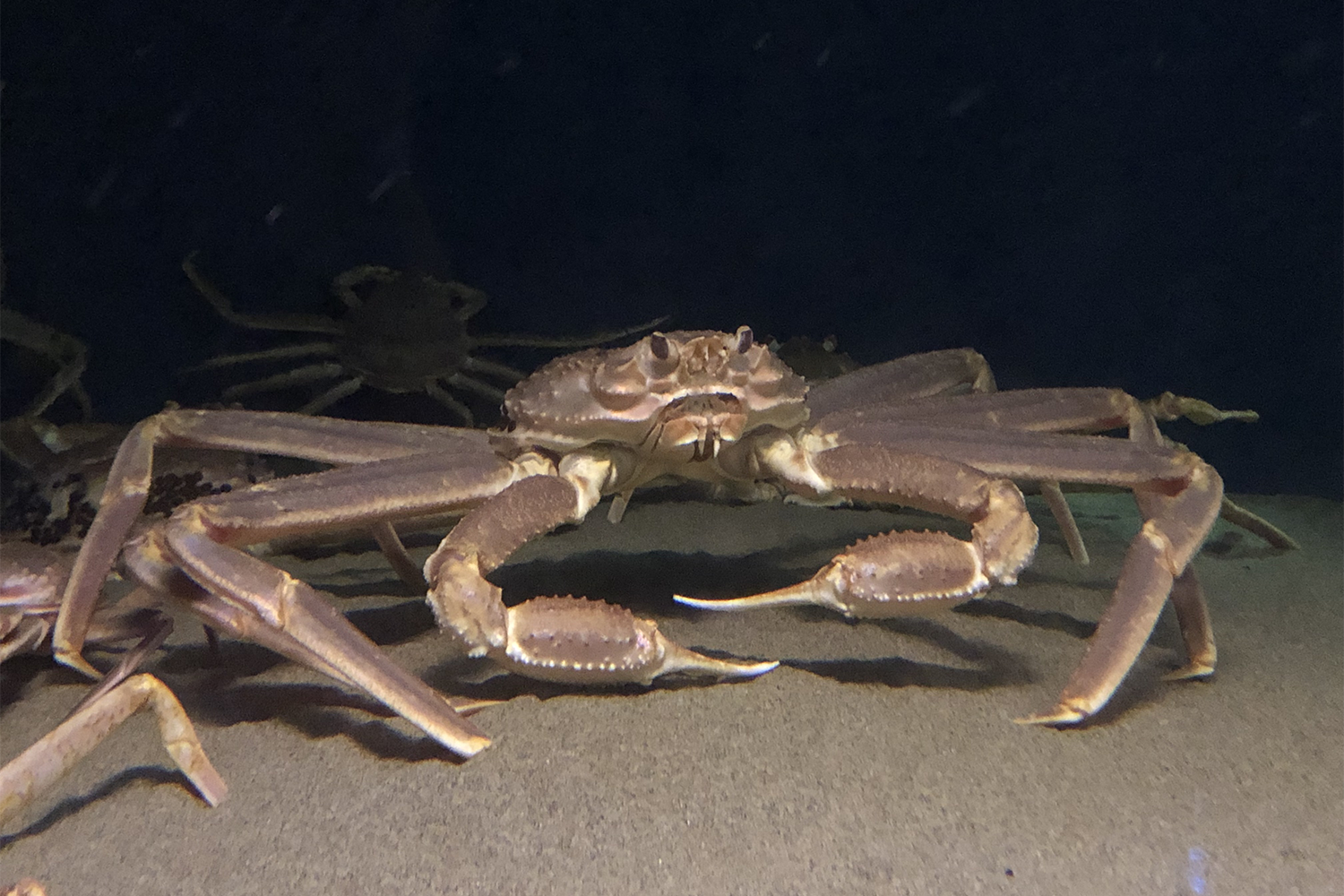
In Atlantic Canada, snow crab (Chionoecetes opilio) is the most important commercial species for the fishery and the rural economy, with an export value of ~CAD 1.3 billion in 2021 (U.S. $960 million) and annual landings of 76,828 metric tons (MT). Snow crab is primarily processed as Individually Quick Frozen (IQF) cooked sections, which generates 25 to 30 percent (~20,000 MT per year) waste comprised of the carapace (cephalothorax shells), viscera and hepatopancreas, hemolymph, residual meat and gills.
Crustacean processing discards contain valuable products including proteins, lipids, astaxanthin, organic acids, essential amino acids, chitin and calcium. In Atlantic Canada, snow crab processing discards are currently not being utilized commercially but could potentially be recovered from processing plant butchering stations as a byproduct and converted into intermediate bio-products (crab meal, proteins, lipids, ash, chitin, pigments) or transformed into higher value bio-products (chitosan, peptides, omega-3, astaxanthin and marine calcium).
These bio-products have a wide range of applications in several fields such as agriculture, aquaculture, biopharma, biomedicine, cosmetics, environment, food science and technology, and health and nutrition. While most crab processing discards are being landfilled, or sea-dumped under permit, environmental restrictions are becoming more stringent, making it more difficult and costly for processors to continue this type of waste disposal (personnel communication with industry stakeholders.
In addition, many of the processes used for crustacean valorization require hazardous chemical treatments using inorganic acids such as hydrochloric acid (HCl), strong caustic solutions and organic solvents such as hexane and ethanol, thereby raising other environmental concerns such as air and water pollution and worker health and safety concerns.
This article – summarized from the original publication (Burke, H.J. and F. Kerton. 2023. Sequential Extraction of Valuable Bio-Products from Snow Crab (Chionoecetes opilio) Processing Discards Using Eco-Friendly Methods. Mar. Drugs 2023, 21(6), 366) – evaluated some simple green technologies for the extraction of bulk intermediate bio-products from unseparated snow crab processing discards.
Study setup
Crab processing discards were collected in May 2021 from a processing plant in Bay de Verde, Newfoundland, Canada. Following the preparation and stabilization of the crab discards, this raw material was used through a combination of mechanical, enzymatic and green chemical treatments to extract carotenoids, proteins and chitin.
Key objectives were to avoid the use of hazardous chemical solvents and to conduct as close to a 100 percent green extraction as possible for the valorization of snow crab processing discards. In this regard, inorganic hydrochloric acid was replaced with food-grade citric acid for shell demineralization, sodium hydroxide was replaced with food-grade protease enzymes for shell deproteination and organic solvents (e.g., ethanol, hexane, acetone) were replaced with food-grade vegetable oils and biodegradable hydrogen peroxide for pigment recovery and chitin decolorization, respectively.
For detailed information on the sample collection, processing and analysis, refer to the original publication.
Results and discussion
In this study, sequential extraction of carotenoid pigments, pigmented protein powder and chitin from unseparated crab processing byproducts was attempted to facilitate ease of raw material collection, which is an important consideration for industry. Results of the protein, ash, lipid and chitin content of our snow crab processing discards are comparable to those reported in other research studies. However, the astaxanthin content of our unseparated samples is much lower than that reported for separated crab byproducts such as crab shellbacks. This suggests that the separation of crab byproducts at the processing plant may be required, particularly if pigment recovery is a priority.
Traditional technologies using organic and inorganic solvents as reported elsewhere for the extraction of crustacean bio-products such as astaxanthin can be expensive and inflexible and may cause structural changes in valuable compounds resulting in a loss in functionality or a decrease in nutritional value. A promising alternative for the extraction of astaxanthin is the use of edible oils since astaxanthin is oil-soluble. Edible oils may also protect the pigment against oxidation, and act as a pigment carrier and an energy source in aquaculture feed. However, previous studies using vegetable oil alternatives reported lower yields of carotenoids from crustacean processing wastes than those obtained using organic solvents, which may be due to the high viscosity of vegetable oils resulting in less diffusivity and point to a lack of comprehensive studies on effective extraction methods and optimized processing conditions using vegetable oil solvents.
To avoid degradation of the carotenoid pigments, we decided to perform direct pigment extraction, using vegetable oils, from crab processing discards prior to protein and chitin extraction. Using a single stage extraction process with a 1:1 (weight/volume, w/v) of discards-oil and heating at 60 degrees-C for 2 hours we obtained 24.85, 31.23 and 37.93 percent astaxanthin recovery with sunflower oil, canola oil and corn oil, respectively. In our study, the only variable evaluated was the type of vegetable oil used for extraction.
However, many factors can affect optimization of pigment extraction (e.g., time, temperature, solvent viscosity, particle size). Further evaluations using corn and canola oils as solvents for pigment extraction and recovery are recommended and should focus on (1) optimizing the crab:oil ratio; (2) comparing single- vs. multi-stage extraction processes; (3) determining the effects of moisture, particle size, time and temperature on pigment recovery; and (4) determining the effect of using co-solvent mixtures such as vegetable oil and ethanol to reduce viscosity. Soybean oil was not available for this study but may be worth further evaluation due to the earlier success noted by other researchers for extraction of astaxanthin from crawfish shell waste.
The high protein (~51 percent), lipid (~16–25 percent) and astaxanthin contents (33.8–39.6 micrograms per gram) plus the low ash content (<1 percent) of the protein-pigment powders may make them suitable for use in aquaculture feeds and poultry feeds. However, further characterization of the protein powders is needed, including chitin content, amino acid and fatty acid profiles, and heavy metals, to confirm nutritional quality.
In a previous study, we determined that crab meal powders were low in two essential amino acids – methionine and lysine. Therefore, the crab protein powder will likely be low in these amino acids. We also established that crab meal and enzymatically obtained protein hydrolysates were high in arsenic, exceeding regulatory limits for use in feeds, foods and natural health products. Therefore, heavy metal testing will be a key quality parameter requiring further evaluation.
It is not known if the high lipid contents of the protein powders are the result of the vegetable oil treatment or the result of crab oil naturally present in the raw material. The lipid contents in the powders represent 26.68–42.94 percent (weight/weight) of the original lipid content in the crab byproducts with the corn-oil-treated sample having the lowest percentage. Further characterization of the pigmented protein powders will be a key factor in further identifying opportunities for commercial applications.
The two-step citric acid process used in this study effectively removed 94–98 percent of the mineral content from the crab shells; however, full demineralization was not achieved. A slightly higher concentration of acid, or lower pH (pH < 3), and a higher ratio of acid to shells will be required to reduce the ash content of snow crab shells to <1 percent. Preliminary results are a good indication that citric acid can effectively replace HCl as a green solvent for crab shell demineralization. Further research to optimize a citric acid two-step demineralization process for snow crab by-products is therefore recommended.
Comparison of the green extracted chitin with chemically extracted chitin indicates that the percent chitin (16–20 percent dry weight basis, db), percent total nitrogen (6.19–6.55 percent db), and percent chitin nitrogen (6.07–6.46 percent db) are similar regardless of extraction method used. The residual protein content was <1 percent in all chitin samples but was slightly higher in the protease-treated chitin samples vs the sodium hydroxide (NaOH)-treated chitin samples. With further optimization of the enzymatic deproteination step, a lower residual protein content may be obtained. Therefore, sequential chitin extraction using vegetable oil and protease enzymes can be just as effective as the chemical approach, with the added benefit of being eco-friendly.
All three processing treatments (oil, enzyme, and hydrogen peroxide) influenced the color characteristics of the chitin samples. The results also suggest that hydrogen peroxide (H2O2) may be more effective as a whitening agent when more astaxanthin is removed from the samples prior to hydrogen peroxide treatment. The hydrogen peroxide treatment may have some effect on color removal, but peroxide treatment alone was not effective for full decolorization of the chitin samples. It may be possible to optimize treatment with hydrogen peroxide considering the effects of other process variables such as particle size, shell to liquid ratio, time, and temperature, in addition to oil and enzyme treatments.
Perspectives
Edible oils, food-grade citric acid, and food-grade proteases are promising alternatives for the green extraction of carotenoid pigments, pigmented protein powder, and chitin from snow crab processing discards. These green chemical treatments have potential to replace harmful organic solvents (e.g., acetone, ethanol) and inorganic reagents (e.g., HCl, NaOH) traditionally used for extracting crustacean bio-products.
Results of our crab bio-product characterization studies demonstrate that with further optimization and scale-up studies, green extraction methods can offer effective, eco-friendly, and safer alternatives to traditional chemically intensive approaches for valorizing snow crab processing discards. However, challenges remain in terms of developing environmentally friendly chitin decolorizing technologies and this area needs further investigation.
Now that you've reached the end of the article ...
… please consider supporting GSA’s mission to advance responsible seafood practices through education, advocacy and third-party assurances. The Advocate aims to document the evolution of responsible seafood practices and share the expansive knowledge of our vast network of contributors.
By becoming a Global Seafood Alliance member, you’re ensuring that all of the pre-competitive work we do through member benefits, resources and events can continue. Individual membership costs just $50 a year.
Not a GSA member? Join us.
Authors
-
Heather J. Burke, Ph.D.
Corresponding author
Centre for Aquaculture and Seafood Development, Fisheries and Marine Institute, Memorial University of Newfoundland, St. John’s, NL A1C 5R3, Canada
[97,99,46,110,117,109,46,105,109,64,101,107,114,117,98,46,114,101,104,116,97,101,104]
-
Francesca Kerton, Ph.D.
Department of Chemistry, Memorial University of Newfoundland, St. John’s, NL A1C 5S7, Canada
Tagged With
Related Posts
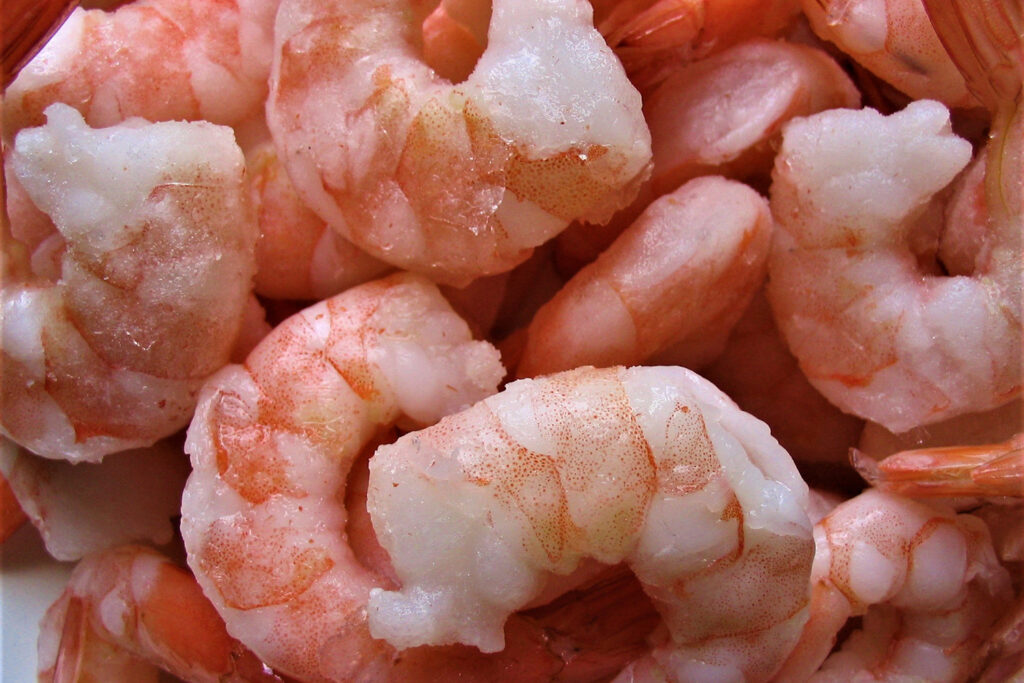
Aquafeeds
Can astaxanthin be replaced with lutein in diets of Pacific white shrimp juveniles?
Dietary supplementation of lutein shows similar growth performance, antioxidant capacity, immunity of whiteleg shrimp compared to astaxanthin.
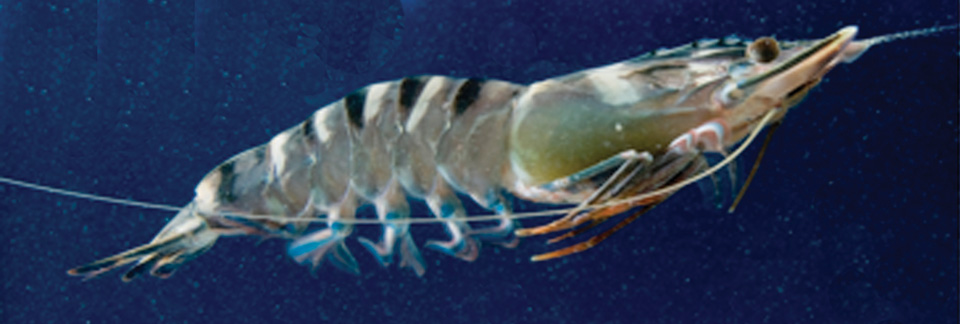
Health & Welfare
Add value to shrimp harvests: Darken environment to enhance shrimp color
Shrimp color is caused by pigments that play an important role in camouflage for survival. For farmed shrimp, proper coloration is generally achieved via synthetic astaxanthin in feed.
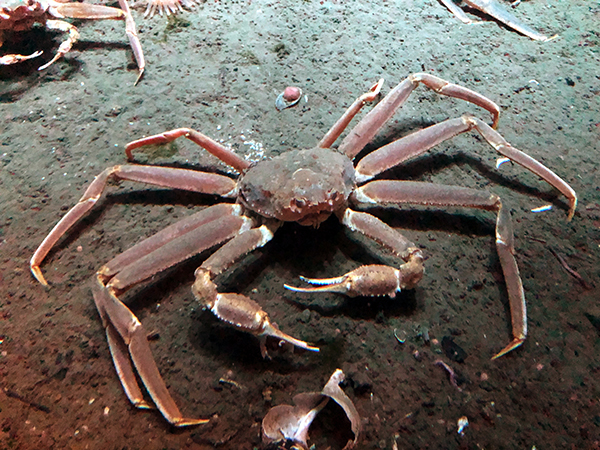
Fisheries
Marine byproduct-based bait performs well in Barents Sea snow crab fishery
Experimental bait using marine byproducts was tested by SINTEF researchers in a Barents Sea snow crab fishery.
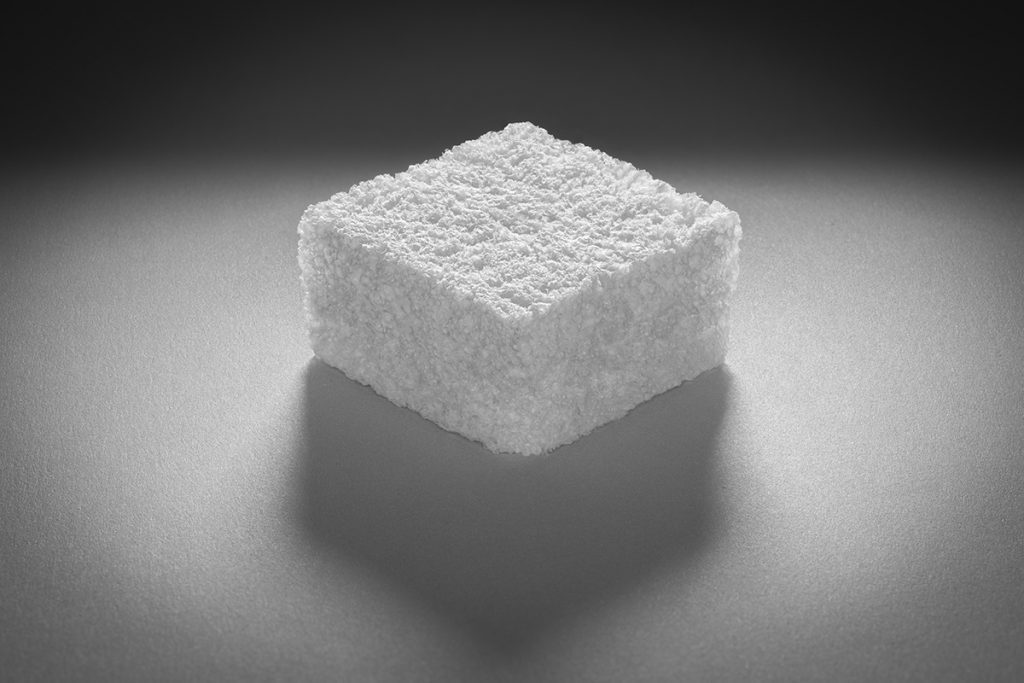
Fisheries
‘Regulation is pushing toward greenifying materials’: How one innovator is upcycling seafood waste into biodegradable packaging foam
GOAL 22: Cruz Foam’s biodegradable packaging foam made with shrimp shells is a finalist for GSA’s inaugural Global Fisheries Innovation Award.



